Small Experiments Boost Feature Delivery
Explores how breaking features into small experiments boosts software delivery, enabling teams to deliver more features, reduce risk, and improve …
Understand and apply Agile Values and Principles based on first principles. Build a foundation for true agility and continuous value delivery


Agile Values and Principles form the cornerstone of effective Agile practices, guiding teams in their pursuit of delivering value consistently and sustainably. These values prioritise individuals and interactions over processes and tools, emphasising collaboration, customer feedback, and adaptability. By adhering to these principles, organisations foster an environment where teams can respond to change swiftly, ensuring that the products developed are not only relevant but also aligned with customer needs.
This framework encourages a culture of continuous improvement, where teams regularly reflect on their processes and outcomes, leading to enhanced efficiency and innovation. The systemic nature of Agile Values and Principles enables organisations to build resilience, allowing them to navigate complexities and uncertainties inherent in modern product development. By embedding these values into the organisational fabric, teams are empowered to self-organise, make informed decisions, and maintain a focus on delivering high-quality outcomes.
Ultimately, the adoption of Agile Values and Principles is not merely a tactical shift but a strategic enabler that transforms how teams operate, fostering a mindset geared towards long-term success and value creation. This foundational approach ensures that agility is not just a methodology but a way of thinking that permeates every aspect of the organisation, driving meaningful change and sustainable growth.
Explores how breaking features into small experiments boosts software delivery, enabling teams to deliver more features, reduce risk, and improve …
Summarises the top considerations for Scrum Masters adopting a coaching stance: building trust, understanding team context, and leading through …
Explores why diligence, consistent attention to quality and standards, is vital in Agile teams, how it’s often overlooked, and practical steps to …
Explores how applying the "just enough and no more" principle in agile practices boosts efficiency, reduces waste, and helps teams focus on delivering …
Compares Satya Nadella’s and Steve Jobs’s leadership, highlighting Nadella’s agile approach that fosters innovation, decentralised decision-making, …
Explores the difference between adopting agile practices superficially and truly embracing agile values, highlighting the need for deep organisational …
Explains why relying on Agile burndown charts leads to over-planning and false progress, and advocates for minimal, adaptive planning and continuous …
Explains why agile teams need a clear understanding of product vision and strategic goals to boost alignment, ownership, decision-making, and …
Explores how project managers can shift from control to collaboration, adopt agile mindsets, embrace uncertainty, and foster team empowerment for …
Explores how kindness, empathy, and compassion in Agile foster trust, improve team collaboration, and enhance customer focus for long-term …
Explains the risks of using say-do metrics in Agile, highlighting how they encourage vanity metrics, harm psychological safety, and shift focus from …
Explores how Agile has shifted from top-down management to decentralised decision-making, highlighting ongoing challenges and the move towards true …
Compares agile product development and waterfall project management, highlighting differences in decision-making, delivery, customer collaboration, …
Explores how practising moderation in Agile, by keeping backlogs lean, limiting work in progress, and focusing on value, boosts team efficiency and …
Many organisations use excuses to avoid Agile, but even large, regulated bodies can adopt iterative delivery to reduce risk and deliver value …
Explains the pitfalls of micromanagement in Agile, showing Product Owners how to avoid "Agile Banditry" by focusing on vision, value, and empowering …
Explores how immersive, hands-on learning helps teams internalise Agile principles, shift mindsets, and drive lasting Agile transformation through …
Explores how immersive learning in Agile and Scrum helps overcome cognitive bias, promotes hands-on practice, and supports continuous improvement for …
Highlights the importance of delivering a usable product each sprint in Agile, warning against focusing on process over outcomes and emphasising real …
Explores how decentralising decision-making, fostering autonomy, and building a shared vision in agile teams can boost engagement and unlock greater …
Learn to spot six key signs of sloth in Agile teams, including missed deliveries, ignored feedback, rigid processes, and lack of adaptation, to …
Discover why experienced Scrum practitioners often misunderstand core principles, and how revisiting Scrum fundamentals restores clarity, agility, and …
We partner with businesses across diverse industries, including finance, insurance, healthcare, pharmaceuticals, technology, engineering, transportation, hospitality, entertainment, legal, government, and military sectors.

DFDS

Flowmaster (a Mentor Graphics Company)

Genus Breeding Ltd
CR2

Epic Games

Ericson

Boeing

Big Data for Humans

Bistech

Brandes Investment Partners L.P.

MacDonald Humfrey (Automation) Ltd.

SuperControl

Deliotte

Teleplan

Capita Secure Information Solutions Ltd

YearUp.org

Healthgrades

Illumina

Washington Department of Transport

Royal Air Force

Nottingham County Council

Washington Department of Enterprise Services

Department of Work and Pensions (UK)

New Hampshire Supreme Court

Boeing

Lean SA

Slicedbread

Kongsberg Maritime

Higher Education Statistics Agency

Slaughter and May